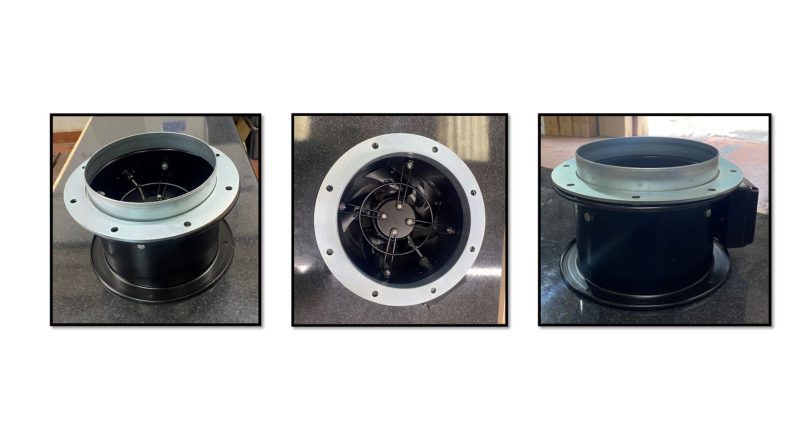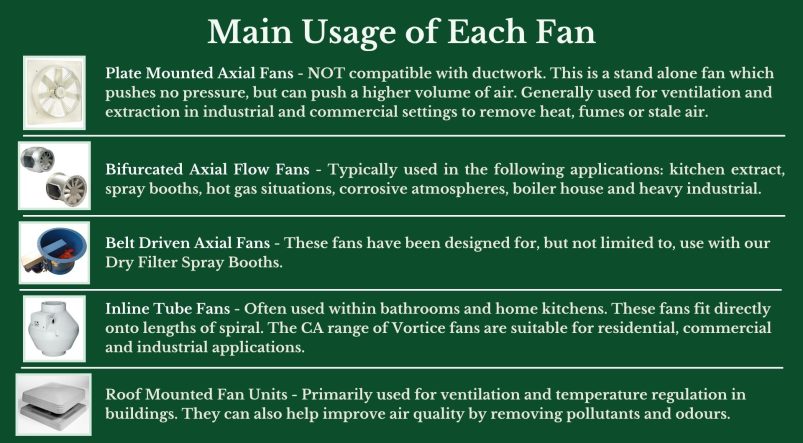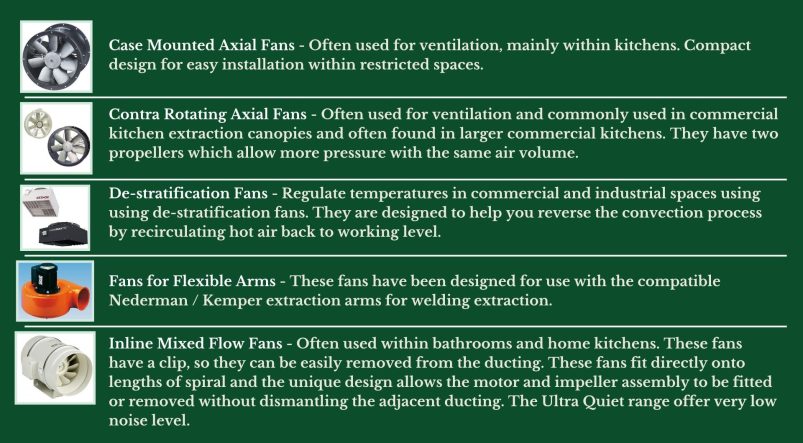A simple guide to help you to connect ducting to fans.
Whether you’re setting up a ductwork system for a workshop, commercial setting, or a home project, connecting ducting to a fan correctly is essential for optimal airflow and system efficiency.
A secure connection helps to reduce noise, prevent leaks, and ensures your ventilation setup performs exactly as it should.
How do I connect my ductwork to my fan?
Different fans require different connections, see below some examples of which fans require which type of connection.
Fans such as the inline tube fans and inline mixed flow fans do not require any additional parts to connect into spiral ducting pipes. These fans have a small end spigot to allow them to fit directly inside spiral ducting.
Fans such as case mounted axial fans and contra rotating fans generally have an outer flange which you would need a matching flange to enable you to connect them to spiral ducting. See the options for connecting them to spiral below.
To connect your fan to your ductwork you could either use a mounting flange or alternatively, a flat bar flange with a top hat spigot.

Pictured below is an example of one of our S&P Case Mounted Axial Fans connected to a top hat spigot using a flat bar flange. To secure your fan connection you should use bolts.

Below you can discover the main usage of each fan, which systems they are often used for and some general facts regarding each fan.
You can find all the fans mentioned below sold on our website, follow the link here to find out more information: https://www.ducting-express.co.uk/category/fans-accessories
Whether you’re upgrading a heating, ventilation, and air conditioning (HVAC) system or designing a new duct layout, understanding the function and purpose of these fans is key to achieving optimal airflow and reliability.


If you have any questions, please contact us on 01455616444 or email us at [email protected]
